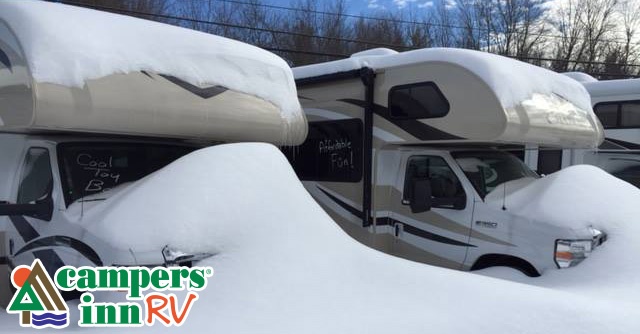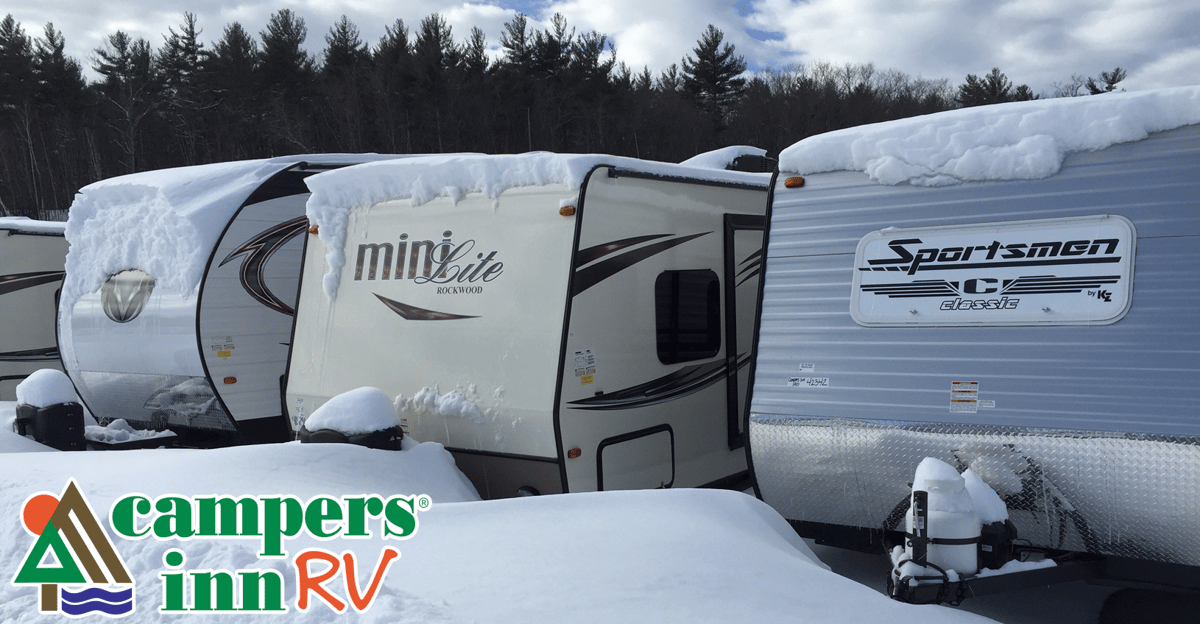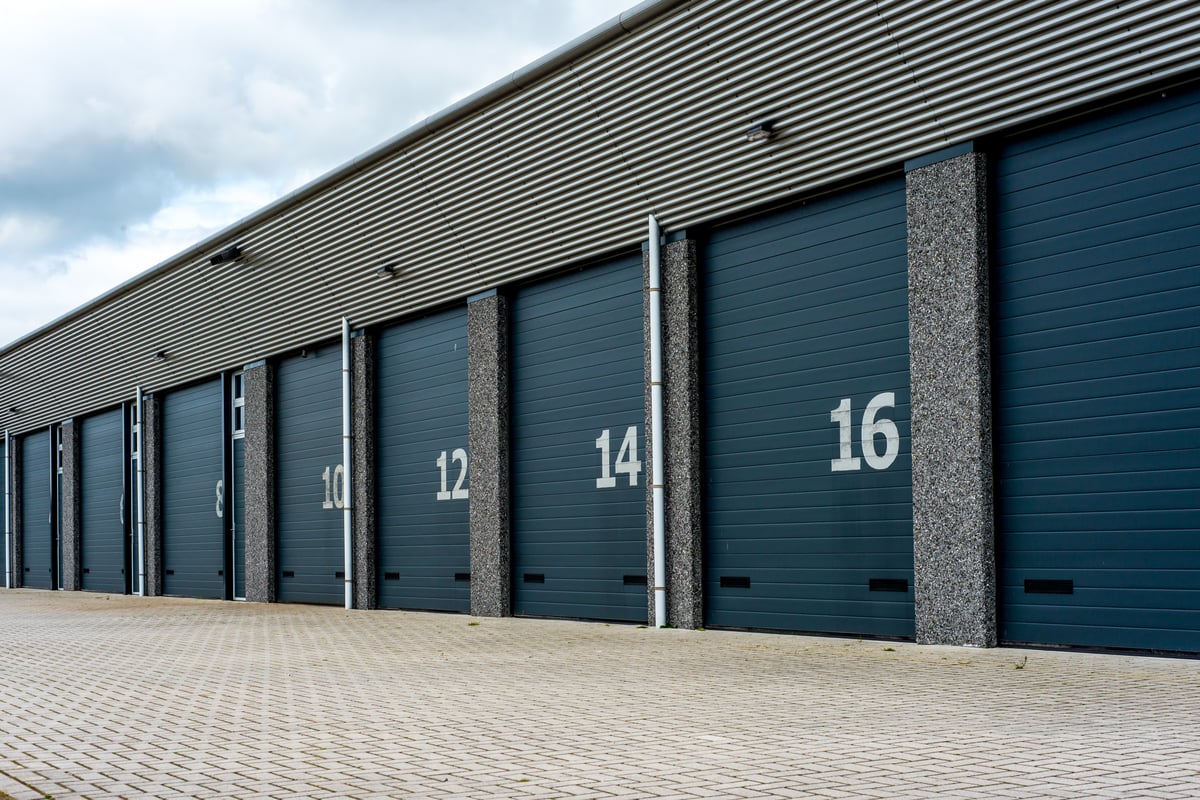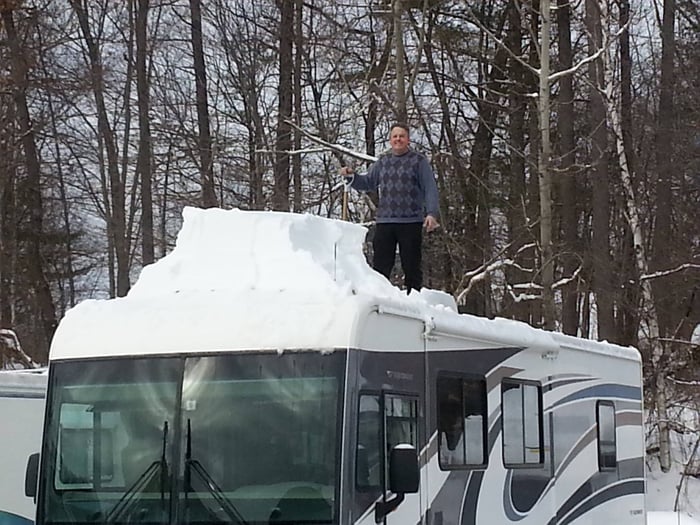

If you live in a cold climate region, you’ll need to store your RV somewhere safe for the winter. Neglecting to store your RV away for the winter can result in costly damage. To avoid costly damages to your camper, here are three approaches at different price points for you to consider when storing your rig away this winter.
1. Rent an RV Storage Unit

The most effective option you should consider to ensure that your RV will stay protected during months of cold temperatures, accumulating snow and blustery winds is to rent a storage unit. This will allow you to put a roof over your trailer, protecting it from the harsh winter conditions. This option can be pricey, but if you are conveniently located near a storage facility with the proper size unit for your RV, then this option is golden!
One great way to locate a storage-facility nearby that has room for your RV is to use the online self-storage finder Sparefoot. They have created a stress-free search platform for locating the most convenient self-storage facilities near you and displays available units that can accommodate your RV’s particular size. Enter your ZIP code and Sparefoot presents you with all the closest self-storage facilities near you. With their advanced search tool, you are able to input the size of your RV to find the self-storage facilities that are a perfect fit. According to Sparefoot, the most common RV storage units run from 25’-50’, and the service will keep you from coming up short-handed or paying for wasted space.
2. Apply a Cover to Your RV
If renting a storage unit is outside of your budget or inconvenient for you, another option is to purchase a cover to protect your RV in the winter. We recommend buying RV covers by ADCO or Camco because both manufacturers offer a quality build and great selection. A cover will prevent snow accumulation and ice buildup on your unit’s exterior, and it will keep meltwater from creeping into the seams between panels and components of your RV. Once you have a cover, there are a few general guidelines to follow to ensure your cover will properly protect your RV in the winter.
- Clean and dry the exterior and interior of your RV before applying the cover.
- Applying the cover by yourself might be a challenge, so grab a family member or friend to help you.
- When the cover is completely sheltering all sides, make sure you double check that it is secured properly to avoid it from coming off.
- Be careful around any sharp corners that could potentially tear through the cover’s material.
- Flatten any antennas on the RV’s roof and make sure to keep your roof vents cracked open a bit to allow proper airflow.
Remember, even though your RV is covered, it will not be completely protected from heavy snow! Always monitor the amount of snow accumulating on your trailer’s roof. Too much snow could potentially dent your vehicle’s roof so make sure to shovel it off from time to time. Use a plastic shovel because it is less likely to damage your RV’s roof surface.
3. Maintain Your RV by Hand

If a storage unit or RV cover aren’t within your budget, there is always the option of maintaining your RV the old-fashioned way! This will require more work and a closer monitoring of your RV, but the only equipment you’ll need is a few plastic shovels for family members and friends!
If you’re brave enough to venture out in the cold, you can keep your unit free of snow and ice by regularly clearing it off yourself. Your RV will still be exposed to sun and wind, but this is surely a better option than doing nothing. Be sure to bundle up, and always use extreme caution when working on the roof of your RV. Ice may form in low temperatures and make the roof dangerously slick.
If maintaining your RV yourself during the winter is right for you, be sure to check out the 11 products you need for DIY winterization.
![]()




